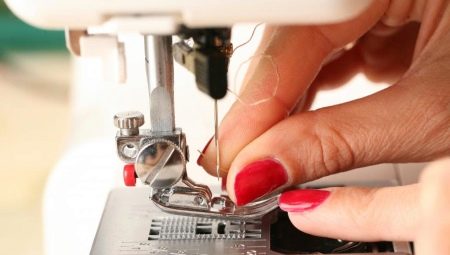Even the most expensive, reliable and high-quality sewing machine, like any equipment, may start to work incorrectly or completely stop. Moreover, the Chinese single-thread machine is subject to breakdowns. Let's see why the sewing machine does not sew and how to fix it.
Common problems
The sewing machine stopped sewing. Be it manual or motorized, you may encounter the following manifestations of this breakdown.
- The lower or upper thread does not feed. The line is “short” - there is not enough thread in the seam. Zigzag stitching does not work at all.
- The fabric does not move as the stitches are sewn. Those, in turn, are layered on top of each other, instead of a seam an tangled ball is formed, threads are wasted.
- The foot does not work: it is impossible to raise / lower it.
- The motor is running, the drive shaft is spinning, but the needle bar is not moving or has stopped working. Sewing is stopped.
- The machine does not show signs of life - the engine does not work, it does not light up and does not display information about the operating mode of the display. The work does not begin.
- Cracking, cracking, malfunctioning mechanisms, sudden “jerking” of the smooth and smooth running of the machine. Reducing the speed of the fabric stitching, which lengthens the time spent on themselves quick and clear actions.
- The machine works, but periodically stops closer to the middle of the seam or immediately after the start of its laying in layers of fabric.
- The machine tries to develop the declared speed even when the foot pedal is fully depressed, but it moves with difficulty.
Some faults are grouped for a common reason for their occurrence. Others, on the contrary, have a variety of reasons.
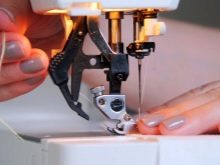
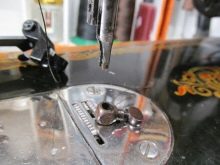
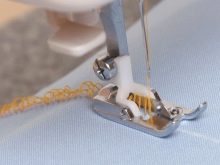
Causes
Some reasons depend on the differences between a particular model and others - even, at first glance, compatible. So, the thread is not picked up from the hook by a needle, the seam does not go because of:
- deterioration of the shuttle tip, its incorrect setting (or detuning);
- failure of the spatial course of the shuttle;
- nicks on the bobbin cap;
- incorrect setting of the acupuncture mechanism (too high or too low);
- beveled screw holding the bobbin;
- desynchronization of the lower section of the machine and the needle bar.
Most likely, the mechanism itself will fail. To service it, it is recommended to contact the service center for the repair of sewing equipment.
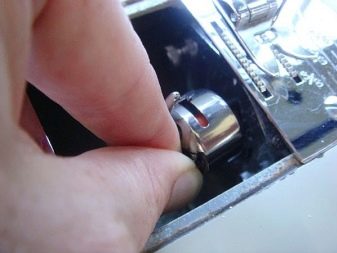
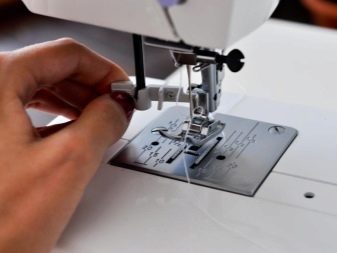
Failures in the operation of the node responsible for maintaining the needle are as follows:
- the needle and fabric are incompatible (thin needle for thick tissue and vice versa);
- selection of a needle with a cut bulb for an industrial machine with a needle holder without a cut (and vice versa);
- the size of the bulb is too small (it is impossible to pinch the needle, it slides out);
- a crooked or blunt needle;
- the thread is thicker than the needle, the course is difficult (the thread breaks, the needle bends and eventually breaks).
The jerky movement of the tissue is due to the following. When the gap in the needle plate is unnaturally widened, worn out, along with the needle, the entire puncture zone of the tissue is pulled inward. This prevents the shuttle from working correctly, and the seam as a result does not contain all the stitches.
It is necessary to check and if necessary re-set the correct position of the teeth of the stapler bar.
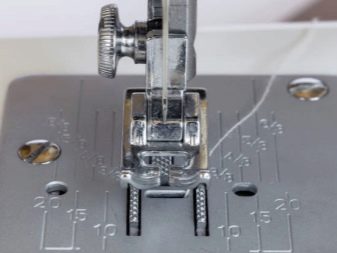

When the staff and the needle are out of sync, the fabric wrinkles, the lower thread does not push into the stitches - the upper thread can be stretched and torn unnecessarily. In some cases, the lower thread may break and stop flowing into the stapler; as a result, the seam is single-stranded, simplified, easy to open and does not hold fabric layers. The use of threads of different thicknesses is unacceptable. A thicker thread is harder to grasp, which is why the seam has a flaw - a skipping of the lower loops.
Ideally, the lower thread should be slightly thinner, and not thicker than the upper and more stretchable. Excessively twisted threads will also provoke skipped stitches and loops - they are poorly seized by the shuttle.
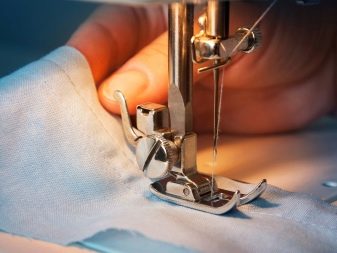
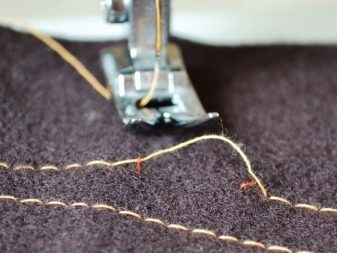
Remedies
In the case when the sewing machine does not capture the bobbin thread due to imbalance, adjust the mechanism by setting the correct distance between the needle and the tip of the hook. Do the following.
- Turn on straight stitching.
- Remove the needle plate.
- Set the needle to its lowest position.
- Gradually raise the needle by twisting the drive. The tip of the hook should go 1.5 mm above the hole in the needle. Between the tip of the needle and the tip of the hook, the distance should be an average of 0.175 mm. These settings are set using the peri-shutter screw.
On older devices - “PMZ”, “Podolsk” and “The Seagull”, the same calibration is performed in a zigzag line mode. The distance between the needle hole and the shuttle tip is detected with the left and right needle passing through the fabric.
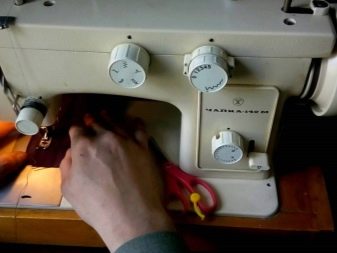
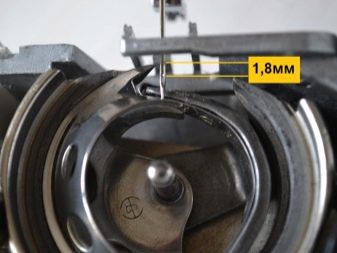
More precisely, the following training manual will help to resolve the same malfunction.
Malfunction | What should be done |
Excessively loose or overstretched thread wound on a bobbin. The tension should be checked manually or by means of a test seam. | Make sure the bobbin is inserted correctly. Re-adjust the tension with the screw near or within the shuttle mechanism. |
The needle bar went to the side while sewing. | Check that the upper thread is not overtightened. |
The shuttle moves with noticeable effort, some stitches on the seam are missing, the thread from the bottom is not always picked up. | To clear a shuttle from scrapings of a thread complicating its course. |
The fabric is drawn into the space (under the panel), causing the shuttle to become frequently stuck. | Replace a blunt and / or twisted needle. She cannot quickly break through matter. |
Weak, sagging loops on the back of the stitch. The shuttle is fuzzy. | Replace the failed shuttle parts.It often gets stuck due to burrs, oxidation and microcracks. |

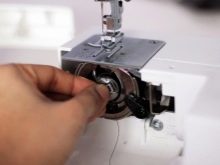

Fault Prevention
- Place the machine on a stable table, console or other support where stability and horizontal plane are maintained.
- Pick up the needle and thread appropriate for the fabric being sewn. Insert and securely lock the needle.
- Thread spools of thread as instructed. Do not break the thread drawing sequence. For example, first the upper thread passes through the tensioner, and then through the lower guide (to the needle bar) - and not vice versa. Also, correctly install the bobbin in the shuttle compartment.
- Leave the 15-centimeter “tail” of both threads, take them to the side. This is necessary for a quality start and continuation of the seam.
- Plug the machine into the network, insert a test flap and try to make a seam. It should be flat and without sagging loops on the back.
- Use smooth and elastic threads. Too fluffy and twisted over time simply grind the eye of the needle, make it more “broken”, and the needle breaks faster.
- The machine has a development (run-out) of the mechanism until the next lubrication. The instructions indicate, for example, an interval of 5000 hours. Electronic cars can be equipped with a "timer" function that tracks the total operating time of the motor and drive. It replaces the electromechanical analogue of the engine hours (or the prototype of the tape recorder), which could be used in old cars of the XX century. Do not ignore the indicated cleaning and lubrication intervals - pay attention to this.
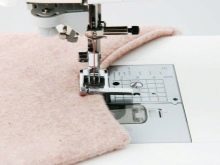
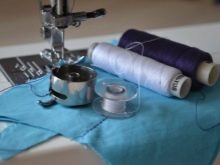
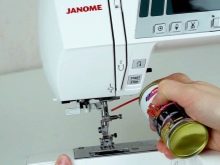
Compliance with these precautions is the key to the longevity and uptime of the product.
What to do if the sewing machine skips stitches, see below.
